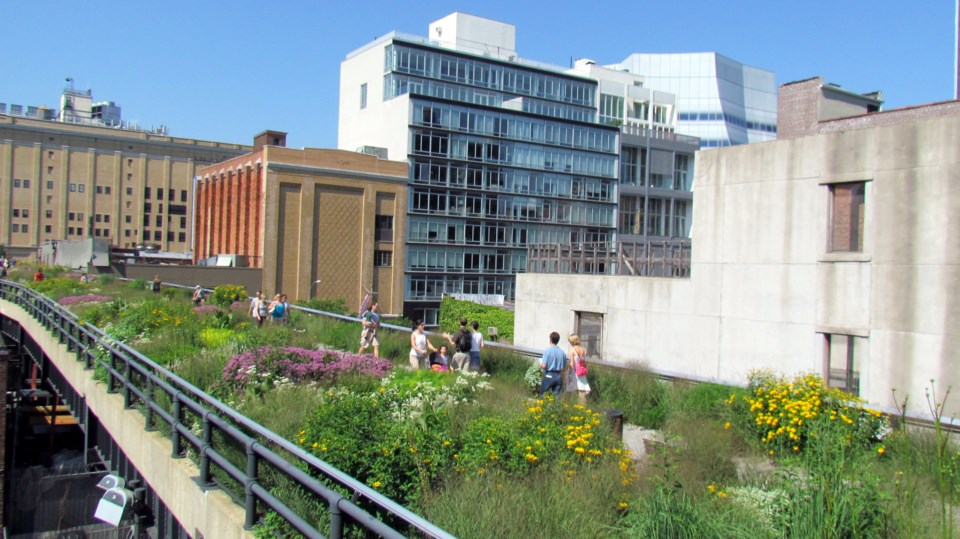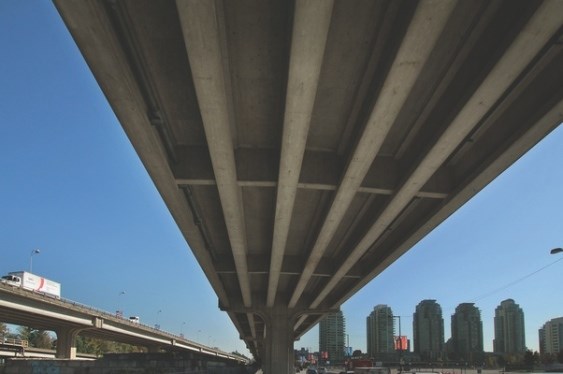I thought I’d be all for this viaduct removal plan. Honestly I did.
From an urban design perspective, unlocking the swath of land under the hulking cement structures makes a lot of sense. We could do something really creative and special with that parcel of land. It truly does, as Mayor Gregor Robertson said, present “a great opportunity for city building.” The problem is, we’re not great at taking advantage of those opportunities.
For all our talk of wanting a world-class city, which to me, means supporting diverse neighbourhoods full of character and depth, Vancouver tends to build just one thing, over and over again. We bulldoze everything in sight and erect forests of towers and monolithic condo blocks clad in monotonous blue glass. We sell the majority at market rates and sometimes include a small amount of subsidized housing in cursory nod to affordability. We make feeble attempts to retain our history with the odd reserved building façade, or a prominent plaque. This does little to maintain the diversity and character of our neighbourhoods, and even less to address affordability issues that affect not just those who fall below the poverty line, but also moderate earners who still can’t afford a place suitable for a growing family.
So when council voted last week to take the viaducts down, my heart sank. I have no doubt it will eventually be a bustling community — but likely it’ll be one where I will never go.
It’ll probably be like the Olympic Village, which has undoubtedly defied expectations. Despite initial fears that it would be a ghost town, today it is a bona fide neighbourhood. But it is an exclusive one. Save for those in the aforementioned affordable units, the area is filled with well-off downsizers, childless high-earners and the occasional family with above-average means.
Sure, there’s a nice, new waterfront park that’s open to the public, but there’s a large number of people who have no reason to visit. If you can’t afford to live in Olympic Village, or shop in its upscale Urban Fare or Legacy Liquor store, why go? Nor do the impersonal chain restaurants in the overly sanitized surrounding developments hold much draw.
When I ride my bike past it on the seawall, I’m still gripped by nostalgia for the abandoned industrial space it was when I first moved here over a decade ago. Back then, my art school friends and I would shoot experimental films against the backdrop of the Salt building, and squirm through holes in the chain-link fence to take photos of the industrial rubble. I’m not saying it should have remained that way. I admit I am a rare specimen who got more use out of the area before it was developed.
Not so with the viaducts. There is already a thriving ecosystem under the freeway that never was — one that will undoubtedly be supplanted by the shiny and the new. There’s the skate park and the soccer fields, the ramshackle tribute to Jimi Hendrix and Hogan’s Alley, and the homeless people who shelter there at night. There’s the string of indie shops and restaurants that have sprung up along Union Street and what’s left of our authentic-feeling Chinatown. The area is a fast-disappearing reminder that this city still has some grit and a DIY spirit that strives to push against the relentlessly rising land values and the sweep of little boxes made of ticky tacky that all look just the same.
I worry all of that will be gone when the viaducts come down. I worry the new neighbourhood will be another specimen that looks great on a postcard but is utterly inhospitable to those who already use the area. And I worry that without the barrier of the viaducts, there will be nothing left to discourage the sweep of gentrification all the way through Strathcona and to the last, barely affordable rental-based havens of the east side.
In the debate over the viaducts’ future, proponents of their removal have positioned the project as a way to honour the community that organized to stop the freeway in its tracks. I think that purpose would have been better served by leaving them in place and revamping them into something akin to New York’s Highline Park.

Because the biggest threat to this city is no longer posed by freeways, but by the relentless development pressure and the scourge of homogeneous condos — exactly the forces that will be unleashed upon this neighbourhood once the viaducts come down. Left standing, the viaducts would be a much-needed reminder that people in this city can rise up and successfully protect the communities they love.
twitter.com/jm_barrett



